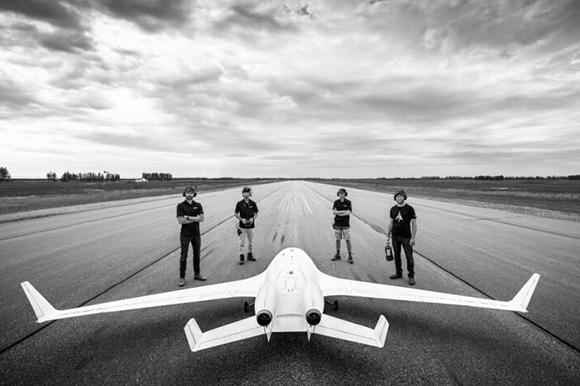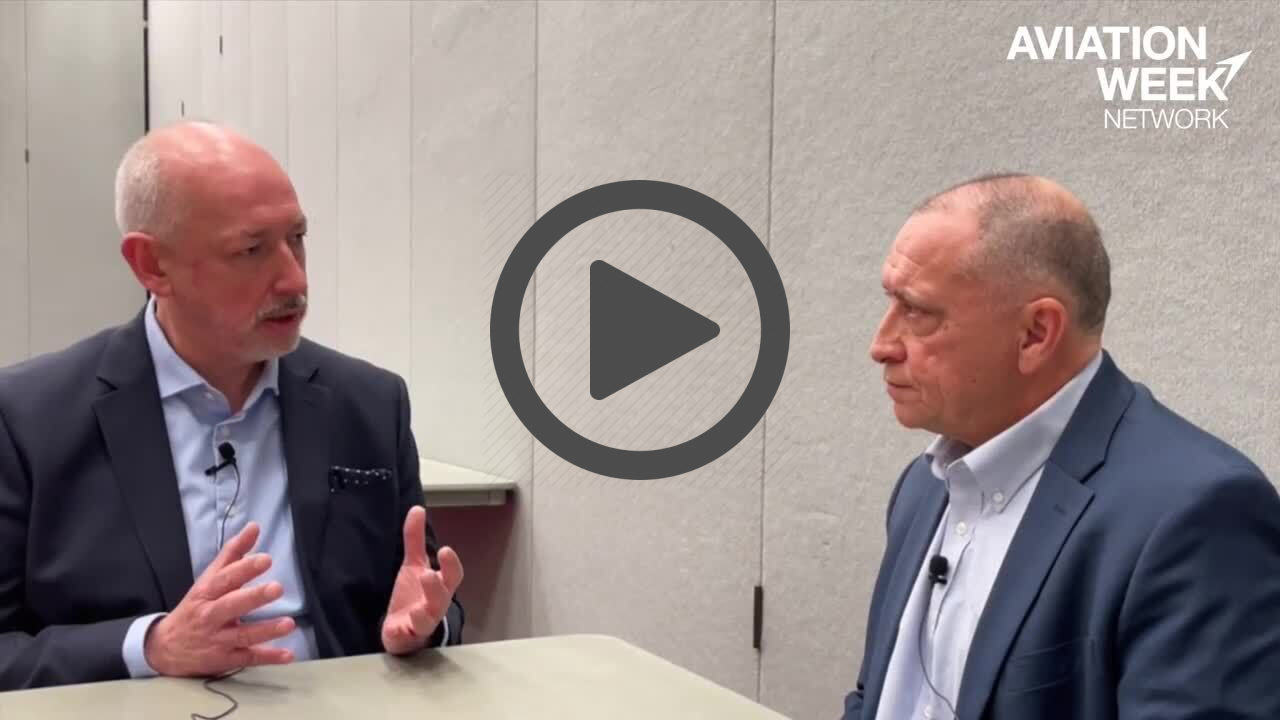
LAS VEGAS—Bombardier says flight tests of its 18-ft.-span subscale blended wing body (BWB) EcoJet technology demonstrator continues to show promising results which could pave the way for a follow-on phase studying further aerodynamic and system design refinements.
The EcoJet design incorporates a mild BWB configuration with a slender lifting fuselage, distinct high aspect ratio wings and U-tail, and was tested initially with a small-scale 8-ft. vehicle to evaluate initial shaping and aerodynamics. Now tests are in a second phase with the larger version and are focused on gathering data for developing flight control laws specific to the unusual characteristics of the BWB geometry.
Bombardier is the first business jet manufacturer to explore the potential of the BWB configuration as a possible means of targeting net-zero carbon emissions by 2050. Although widely studied for more than 30 years by Boeing, the aerodynamically efficient blended and hybrid wing concept has only recently gained serious traction. Airbus has included a BWB in its potential line up of configurations for a future airliner under its ZEROe program while California startup JetZero has also launched development of a full-scale blended wing demonstrator with Northrop Grumman company Scaled Composites for the U.S. Air Force.

Discussing newly released images of the Phase 2 vehicle at NBAA, Stephen McCullough, vice president of engineering and product development at Bombardier says the “larger aircraft gives us the ability to fly a bit longer, a bit faster and a bit higher so we really get much more data in the free-flight regime. One of the key aspects now is that we look at the flight controls part of it—the control laws. This is quite an unconventional shape and how it behaves in terms of (flight control) surface input can be quite different to what we're used to. This gives us real data to go and optimize and configure the next phase of testing in a way that really sets it aside for the future and keeps us focused on our North Star of getting to the 50% reduction in aircraft emissions.”
Phase 2 will continue over “multiple years,” says McCullough, who adds that a follow-on Phase 3 could include a greater focus on systems and structures. “We really are approaching this in a very clear manner—we are letting the science and the physics drive us to where we needed to actually be.” Although he acknowledges that the move to a potentially larger-scale vehicle remains a possibility for the third phase, McCullough says “we're not making that decision just yet.”
The company is “excited by the results,” says McCullough. “Our initial bookkeeping has indicated that of the 50% fuel burn savings around 20% allocation is aerodynamics, 20% from propulsion and 10% from other means, including novel weight-saving technologies and so on. I think what's important about it is that there's no hard limit to those—if one area does a bit less another does a bit more.”
At NBAA Bombardier President and CEO Eric Martel also says the company’s next flagship, the Global 8000, remains on track to enter service in the second half of 2025, with a test vehicle having accumulated 150 hr. of flying. Announced in 2022, the 8000 will have a range of 8,000 nm and a top speed of Mach 0.94. “We feel very secure,” with the schedule says Martel who notes that the company has also recently marked the delivery of the 150th Global 7500—the ultra-long-range stablemate to the upcoming Global 8000.
Bombardier and Duncan Aviation will offer Gogo Business Aviation’s 5G connectivity upgrade, providing connection speeds of 80 Mbps in most of North America. Customers are now able to install 5G provisions, including new MB-13 antennas, on new and in-service Global Express, Global Express XRS, Global 5000, 5500, 6000 and 6500 aircraft at Bombardier service centers worldwide and Duncan Aviation facilities in the U.S. A provisional 5G upgrade kit will be available for Challenger aircraft next year.
The company also continues to grow its MRO footprint, which expanded service centers in Singapore and London, new service centers in Paris, Melbourne, Florida, and Miami and a facility that will open in Abu Dhabi in two years.
—With Joe Anselmo
